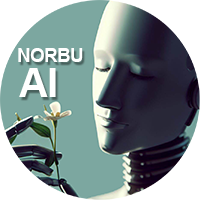It is also not surprising to find a huge amount of coins in water pools – especially those where there is an image of Kuan Yin just beside it. Of course, one cannot help noticing the price of oil lamps which nowadays costs anything from RM 20 (US$ 5.70) to RM 100 (US$ 33). I distinctively remember that not long ago that one could easily light a lamp for under RM 10 (US$ 3.30). Talk about hyperinflation!
While I understand that many temples depend on a major event like Wesak to furnish their “coffers” to last them for a year, what I cannot fathom is the presence of undesirable commercial interests such as “gaming outfits” located within the temple compound. For sometime now, one of the nation’s biggest gaming company has been allowed to set up stall to give out free drinks to visitors within one of the biggest Buddhist temple in the country, the Brickfields vihara.
I’m sure that every monk teaches that gambling is a “no-go” activity, one that clearly violates the precepts. Yet, by having such a stall with a very visible banner announcing its presence, I just wonder what parents would tell their Sunday school going kids if the young minds should ask them why is there a “Damacai” (the name of the local gaming company) counter inside the temple?
Secondly, there seems to be some elements of “non-Buddhist” invasion which – surprisingly - can only be seen during Wesak. I am referring to the rites of “washing one’s face with holy water” taken from the fountain pool. As a multi-racial, multi-religious society, it cannot be denied that Hindus too participate in the Wesak festivities. As a result of their presence, many have taken the habit to wash their face with water taken from fountain pools as an act of “purification”. Unfortunately, many unknowing Buddhists have also taken up this water cleansing ritual. My question would be: What have the local temple authorities – especially the monks – been doing about this? Why is it that devotees are allowed to conduct an act that is wholly alien to Buddhism right under their noses?
Let’s not even get into the mass hysteria involved when crowds throng the monks to have their personal belongings blessed. In such an event, one could see amulets, pendants, rings, Buddha images, cards and even wallets collectively being placed into a monk’s alms bowl for the monk to chant over it, so that the objects are “blessed”. Were we not taught that a monk’s bowl is supposed to carry only food and medicine? What sort of message are we giving to the public, especially since there is an on-going campaign against the so called “bogus monks” where the main educational point was the right use of the alms bowl?
Personally I feel that there is serious defect in the way the local temple authorities are promoting the awareness of Buddhism to the public on Wesak day, purportedly to be holiest in the Buddhist calendar. On one hand they say that these activities are necessary to at least bring some “Dharma” awareness to the Wesak crowd, or the so called once a year Buddhists. At the same time, they condone all these things right in the middle of public view. What sort of image are they projecting for these “Buddhists”? In fact, I personally feel that the authorities are more into what I call as “spiritual materialism” rather than promoting values and teachings as espoused in the Four Noble Truths.
Given the type of circus that comes to town every Wesak, it is no wonder that “serious Buddhists” – those who have been converted to the Dharma, the practicing kind, are not growing as rapidly as those who profess the faith in name. If temples and their respective committees are serious in their role as “Dharma protectors” they have to honestly open up their hearts and see the rot that is festering before them. Otherwise, do not blame the younger generation for the shift in their spiritual search to other faiths.

